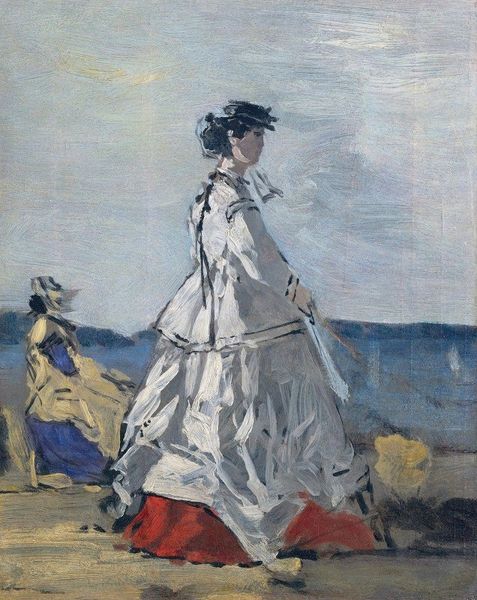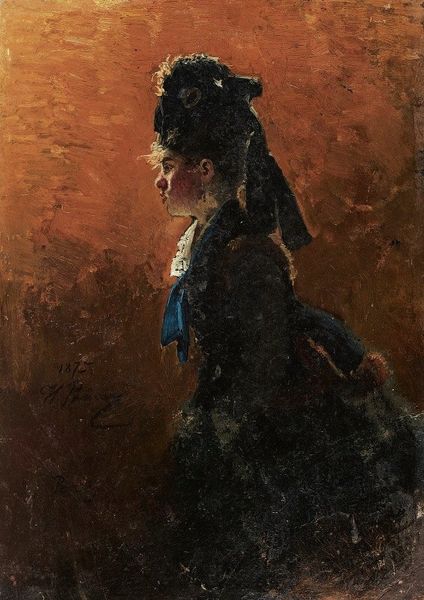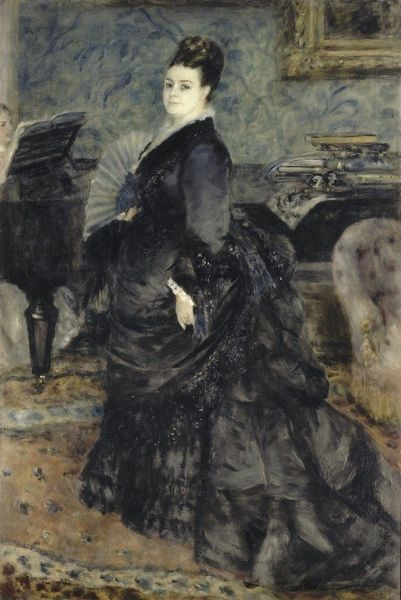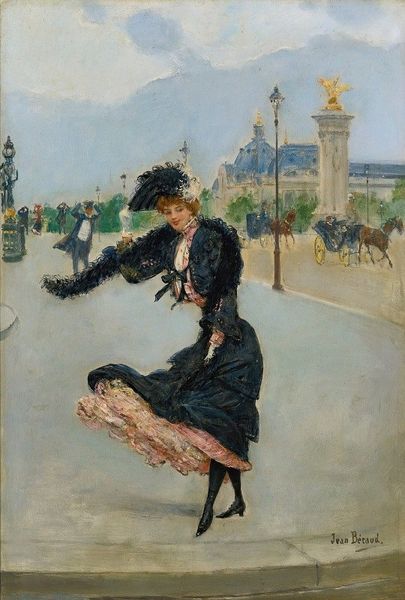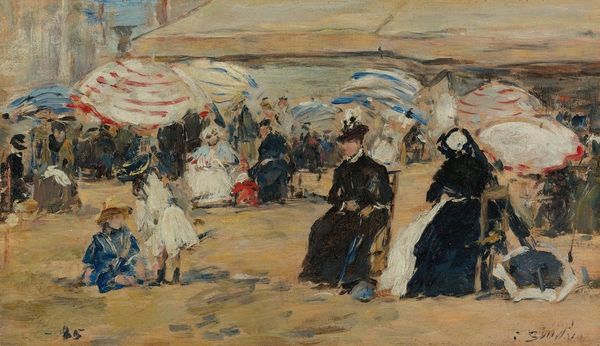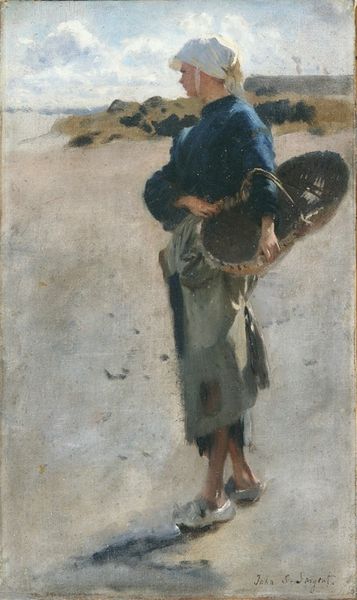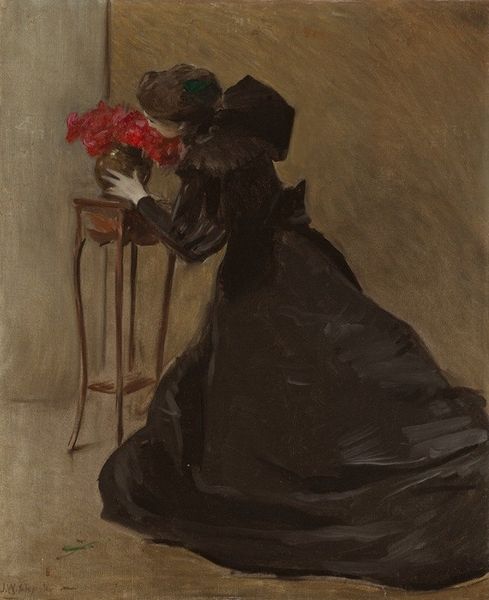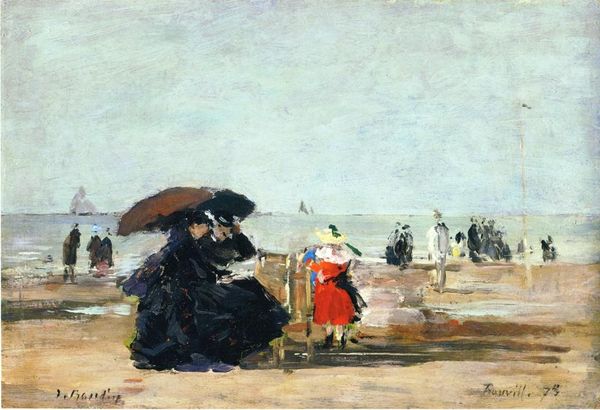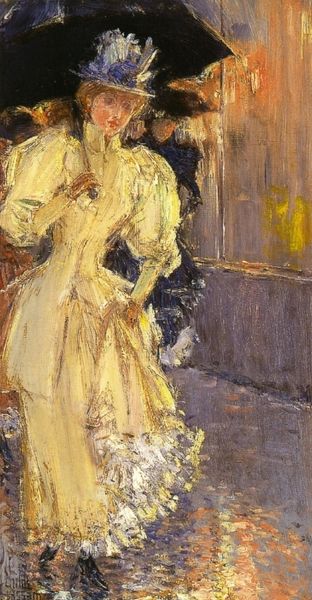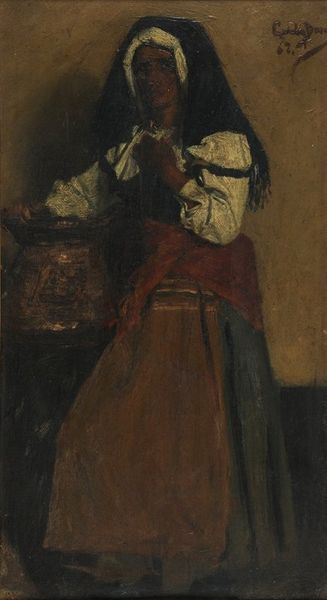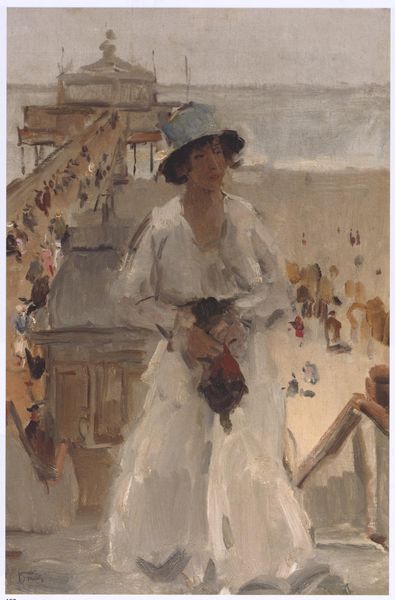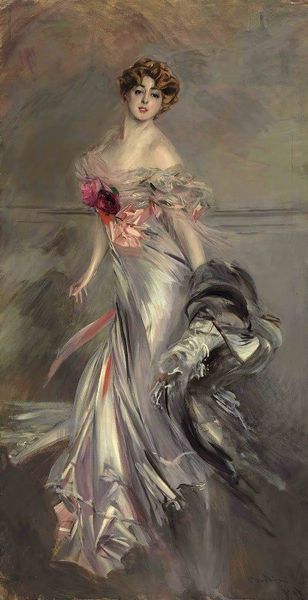
Copyright: Public Domain: Artvee
Editor: So here we have Johan Barthold Jongkind's "Young Woman With A Parasol," painted in 1855, using oil on… something. It has an almost fleeting quality. What captures your attention in this piece? Curator: I am drawn to the overt display of luxury in "Young Woman With A Parasol" because it speaks volumes about the societal and material conditions of 1855. Jongkind meticulously renders the fabric of her elaborate gown and the delicate construction of the parasol. This level of detail directs my gaze toward the labor required to produce such items. Who were the spinners, weavers, and seamstresses? What were their working conditions, their wages? Editor: That’s not something I considered. So you're not just looking at the beautiful end product, but more what went into making it all? Curator: Precisely! The art isn't solely in the brushstrokes but embedded in the social context of its creation. Consider, too, the paint itself—oil-based pigments requiring extraction and refinement. We must acknowledge this intersection of resources, labor, and consumption. It allows us to challenge the traditional view of fine art. It also serves as a social commentary. Editor: It’s like the painting itself is just the visible tip of a much larger iceberg of labor and resource extraction. Now, when I look at the dress, I'm also considering its material origin. I have never approached artwork like that! Curator: Indeed! And think of how the commodification of leisure, so clearly displayed by the woman in the painting and her leisurely stroll, is intertwined with class and production. This approach opens up art historical analysis in truly radical ways. Editor: This reframing gives this piece, and art in general, a much deeper level of significance than I previously considered! Thank you.
Comments
No comments
Be the first to comment and join the conversation on the ultimate creative platform.
